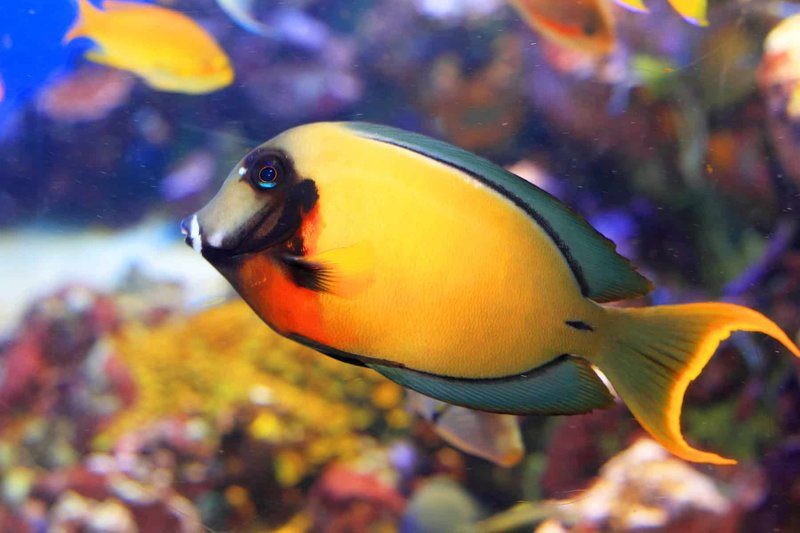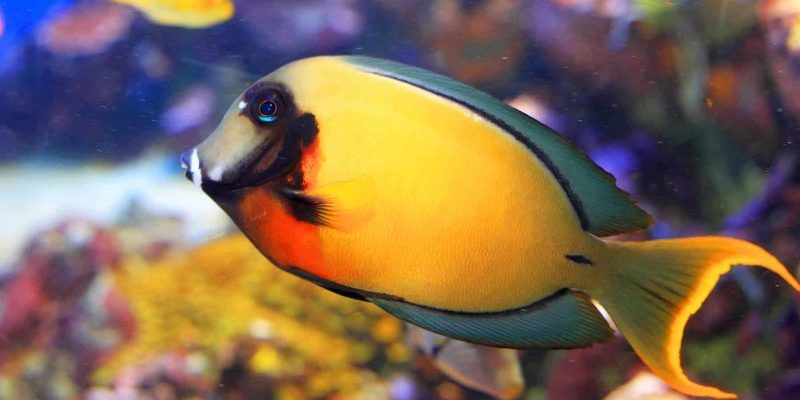
Tangs are more than just pretty faces; they play a crucial role in their ecosystem. They help maintain the health of coral reefs by feeding on algae, which, if left unchecked, can smother corals and disrupt the entire habitat. But despite their importance, tangs are struggling in the wild due to various threats. So, let’s dive into the common dangers they face, and why it matters to us all.
Habitat Loss: A Shrinking Home
One of the biggest threats to tang fish is habitat loss. Coral reefs, where tangs thrive, are being destroyed at alarming rates. This loss comes from several directions: pollution, climate change, and overfishing are just a few culprits.
You might be wondering how this actually affects tangs. Well, think of it like this: if you’ve ever moved to a new city, you know how important it is to have a comfortable home. Tangs need coral reefs not just for shelter but also for food. A reef that’s damaged or dead means less food and safe spaces for tangs to live and reproduce.
As coastal development continues, the natural habitats of tangs are often altered or destroyed. Mangroves and seagrass beds are also important parts of the ecosystem that can be affected, further reducing their living space.
Overfishing: The Unforeseen Predator
Next up is overfishing, a term that might sound familiar, but its impact can be surprising. Tangs are sometimes caught for food or for the aquarium trade. This over-exploitation removes a significant number of fish from their natural environment, which disrupts the balance of the ecosystem.
When tangs are overfished, it creates a ripple effect. For example, if tangs decline in number, algae can start to take over the reef without these fish to keep it in check. This chain reaction can lead to the decline of coral reefs, which, as we discussed, are essential not just for tangs but for many marine species.
What’s more, many species of tangs are sought after because of their vibrant colors, leading to illegal fishing practices that further endanger them.
Climate Change: The Rising Tide
Climate change is another formidable threat to tang fish. Rising ocean temperatures can lead to coral bleaching, where corals lose their color and their ability to provide shelter and food for marine life.
When temperature levels spike, you’ll find that corals become stressed and expel the algae living in their tissues. Since these algae provide essential nutrients to the corals, this can lead to coral death. Without coral, where do you think tangs will find food and shelter? The simple answer: they can’t.
Additionally, increased levels of carbon dioxide in the atmosphere acidify the ocean, making it harder for corals to build their skeletons. What’s the end result? A weaker ecosystem that tangs and countless other species rely on for survival.
Pollution: The Silent Killer
Pollution is like a sneaky intruder, creeping into the tangs’ habitat and causing harm in different ways. Chemicals from agriculture, plastics, and urban runoff can find their way into oceans and wreak havoc on marine life.
For example, when fertilizers are washed into the ocean, they can cause algal blooms. These blooms may seem harmless at first, but they diminish oxygen levels in the water and release toxins that can be fatal to fish, including tangs.
Let’s not forget about plastic pollution, either. Tangs and other fish might mistake small plastic pieces for food, leading to health problems or even death. The ocean is a big place, but these tiny hazards are becoming too common.
Invasive Species: Unwanted Guests
Imagine a party where someone crashes uninvited. That’s what happens when invasive species enter marine environments. These species can outcompete native fish, like tangs, for food and habitat.
Take the lionfish, for example. Native to the Indo-Pacific, it has made its way into Caribbean waters, and it’s not shy about causing chaos. Lionfish prey on smaller fish and can quickly reduce their populations, leading to further struggles for tangs trying to find food and space.
The introduction of invasive species isn’t just about competition. These newcomers can also introduce diseases that native fish are not equipped to handle, which could spell disaster for populations of tang fish.
Conservation Efforts: Making a Difference
So, what’s being done to address these threats to tang fish? Fortunately, there are numerous conservation efforts aimed at protecting not only tangs but also their habitats.
Marine protected areas (MPAs) are one effective strategy. By creating designated zones where fishing and other damaging activities are restricted, we can help restore fish populations and coral reefs. This is like giving a safe space for tangs to thrive without threats looming overhead.
Additionally, education plays a vital role. By raising awareness about the importance of tangs and the challenges they face, more people can become involved in conservation efforts. Simple actions, from reducing plastic use to supporting sustainable fishing practices, can collectively make a big difference.
What You Can Do: Be Part of the Solution
If you’re interested in helping out, there are plenty of ways to get involved! Every little action counts, and here are a few ideas:
- Support organizations that focus on marine conservation.
- Reduce your plastic use: consider reusable bags and straws.
- Be mindful of seafood choices and support sustainable sources.
- Educate others about the significance of coral reefs and the tang fish.
Getting involved can be as simple as sharing information with friends or making eco-friendly changes in your daily life. Remember, we’re all part of this beautiful planet, and protecting it is a shared responsibility.
In conclusion, the threats to tang fish in the wild may seem daunting, but with the right knowledge and action, we can help safeguard their future. By understanding these challenges—from habitat loss to the impacts of climate change—we can take steps toward a healthier ocean. Together, we can ensure that these vibrant fish continue to grace our reefs for generations to come.

